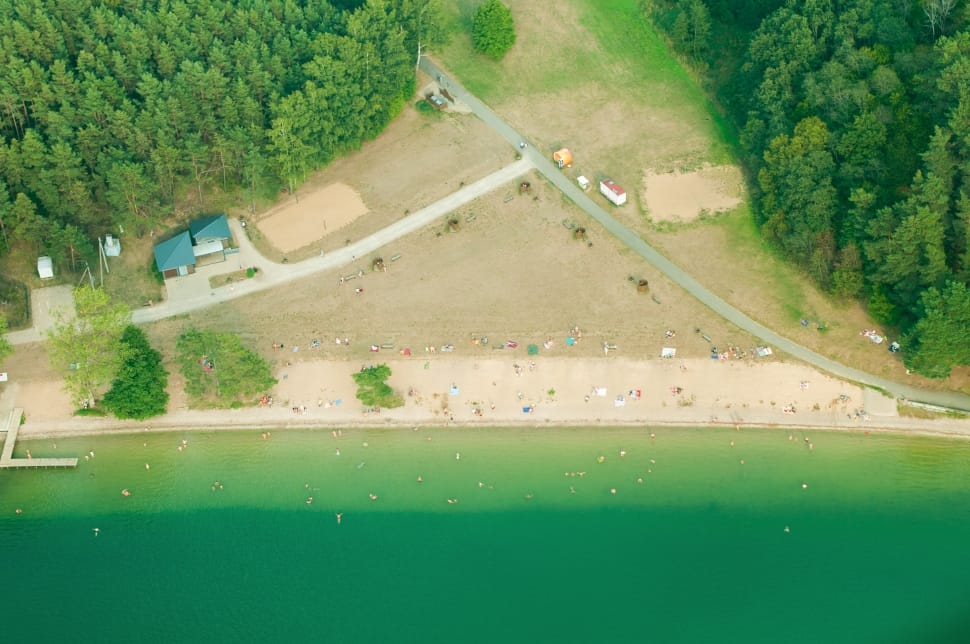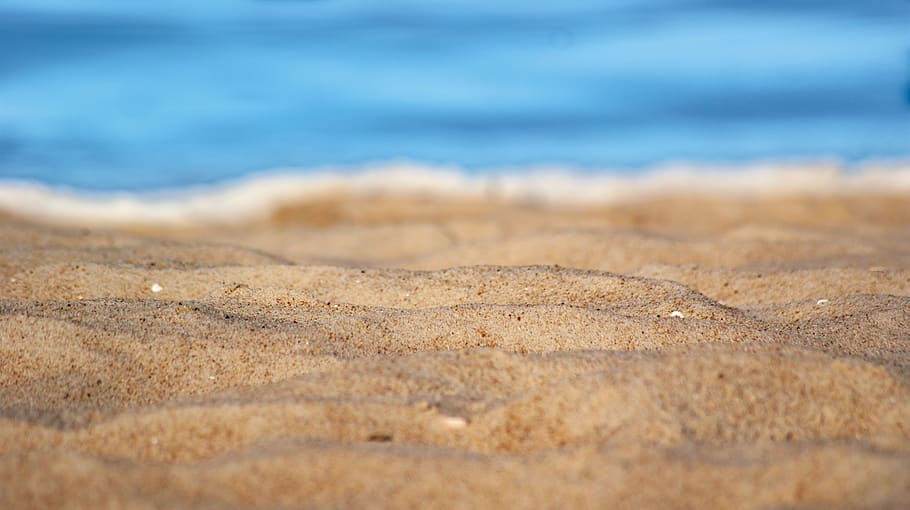Look at this picture.

Obviously, it’s a beach. We know what it is because even if we have never visited one, we have seen them on television shows, in movies, postcards, vacation photos of family and friends.
But imagine if you had never been to Earth. It looks like something solid, doesn’t it? This strip of sand along the landscape, meeting up with the aqua green of the water. Looking down, this looks like a solid place you could land your spacecraft.
Even here, with this picture, if you were a martian showing it to your martian friends, they would see this the same way we see a tile or linoleum floor. Solid. Hard.

Looks solid. Like you could drop a glass on it, and it would shatter. Especially when looking at it from a distance.
Moving closer to it, however, we see…
![]()
It is malleable. Not solid at all. Soft, in fact. And made up of more than just a big line of something solid. Rather, it is a collection of billions of tiny parts. While – from a distance – it looks solid, the truth is it is constructed of all of these grains of sand, together forming a walkable surface. Like this:

Each grain of sand, serving the purpose of making the surface beneath our feet.

But wait…
Let’s look even closer:

Clearly, that “solid-looking” strip of coastline is the result of a collection of individual grains of sand that is not, in fact, solid at all.
But there’s more.
What if we put a single grain of sand under a microscope?
Magnified at 500x under an electron microscope, a grain of sand looks like (a) [(b) is soil]:

But, if you go even further, you will discover that sand – like everything else in existence – consists of atoms, a piece of matter that is made up of three subatomic particles: protons, neutrons, and electrons. In a grain of sand, there are more atoms (10 sextillions) than there are stars in the universe.
Just like that skyview of a coastline that looks solid but, when magnified, shows it is not solid at all, humans are much more complex than what is seen with the eye. We are a collective source of energy, all vibrating at different frequencies.
The point I want to make about this blog post, is the illusion we have of our separateness and the actual connection we all have. We are all a part of the same organism, much as each atom in a grain of sand is an integral part of a sandy beach.
So while we are each, individually, a collection of unfathomable atoms, this is also what connects us collectively as an organism and, why it is so critically important that we see the value in one another as a part of a whole.
Some beaches have brown sand, some have red, and some combine any number of colors but all are collections of grains of sand upon which we walk.
As an evolving species, we grow and adapt to changes in our environments so, when one grain of sand dissolves or ceases to exist, the remaining grains will work together to continue strengthening the beach.
No matter what color, culture, race, religion, age, or sex we are, we are all magnificent parts of the human race, and we need each other to stay whole.
